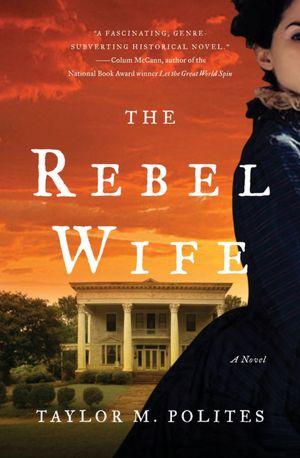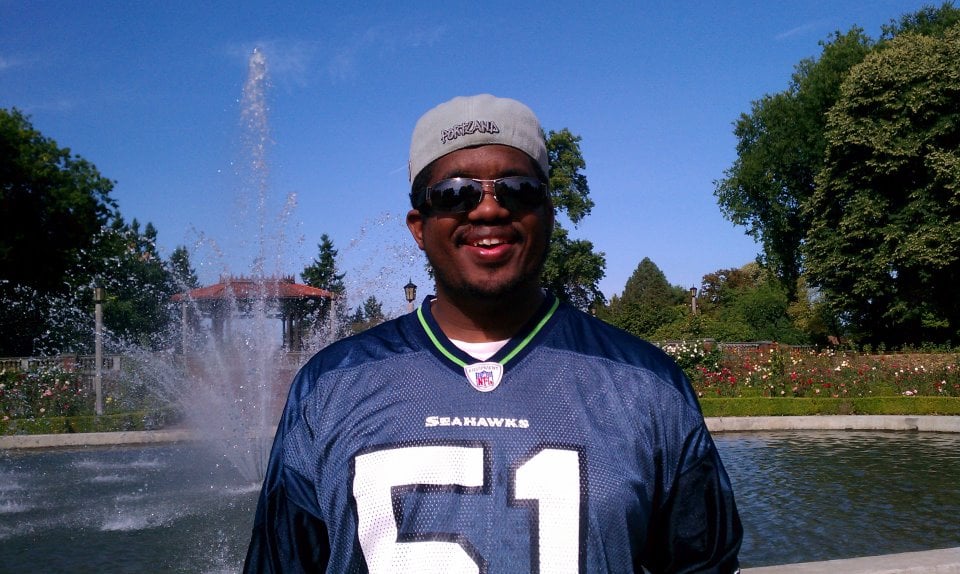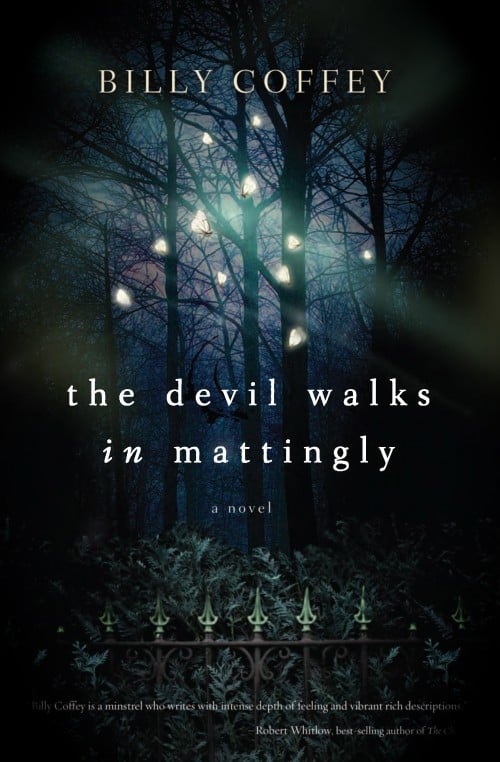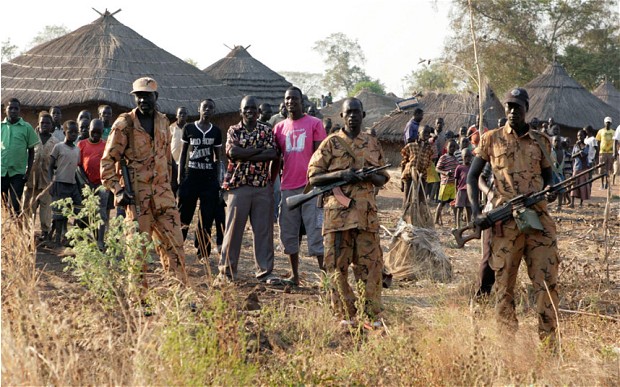Publishing trade shows provide a great opportunity to connect with authors, booksellers, and readers. At the 2011 Southeast Indies trade show in Charleston, author Karen Spears Zacharias met debut novelist Taylor Polites. Listen in as Karen and Taylor discuss the work of writing and Taylor’s debut novel, The Rebel Wife, recently named by O Magazine as one of the Top Ten Titles to Pick Up Now. “This engrossing novel about a resilient heroine in the post-Civil War South has all the drama of the era and none of the cliches,” says O Magazine.
KAREN: What did you do before you became a novelist?
TAYLOR: I studied History and French in college and after graduation had this plan to get a PhD in history—either Renaissance France or American history (with a focus on the Civil War South, of course). A friend encouraged me to move to New York City for the year between college and grad school. I did and fell in love with New York. I started as an admin assistant in a large investment bank and ended up after twelve years overseeing the investor reporting and investor communications for a large group of private equity funds. A fascinating place to be in the 1990s and 2000s!
KAREN: What was the incident that happened in your own life that made you know you had to write this story?
TAYLOR: I had this idea a long time ago, back in 1998, when I was working on what I thought would become a novel set in North Alabama, but didn’t. A Reconstruction side-story came to me of a woman from a family who was wealthy before the war and was forced to marry a scalawag after. Then the scalawag dies from a blood fever and she is left alone in the midst of ever-growing chaos. There was something about this woman that captivated me. I couldn’t stop thinking about her. Soon I abandoned the earlier novel and focused exclusively on the Reconstruction story. I focused my reading and research on the period and the idea developed, taking on a larger meaning. It grew into something imperative for me. While I have had many ideas since 1998 and worked on different projects, The Rebel Wife was always a must-do story.
KAREN: What intimidated you about writing The Rebel Wife?
TAYLOR: Getting the history right—the details of the period right. That was intimidating. I did a lot of reading of newspapers and period magazines to get a sense of what people were talking about, what they thought about and consumed. I also read a lot of diaries and letters and other period sources to get a sense of voice and place. The most challenging part of the process, of course, was writing the voice of a woman in 1875 North Alabama. Sometimes, I wondered what on earth I was thinking to take on this challenge! But those sources were a major help in pulling me through. The voice of Mary Chesnut in her diaries, and Huntsville’s Kate Fearn in her letters (collected in a book called Cease Not to Think of Me), and the spunky Sarah Morgan in her Louisiana Civil War diary. Listening to those women talk was critical to developing Augusta’s voice and keeping her on track.
KAREN: Did you ever hit that wall? The one where you told yourself, I cannot do this?
TAYLOR: Yes, I hit that wall a few times. With anyone who writes, doubt is an ever-present obstacle. I think it is always there, but on your first project, it must be at its worst (I hope, at least, the worst is behind me). Writers are notoriously secretive about their work and there is no wonder to that—the wrong word or expression from another person can lead to a spiral of self-doubt, and much worse when you are sharing your work with people. You have to be very thoughtful about how much you talk about your work and with whom.
KAREN: How did you push through it?
TAYLOR: I was so, so lucky to have a great mentor in the MFA program where I wrote this novel. The Wilkes University MFA was an incredible community of writers—both established faculty and aspiring students—who provided support and motivation throughout the process. My mentor, Kaylie Jones, a great novelist to whom I dedicated The Rebel Wife, led me through the drafting process, held my hand really. And when I was having those moments of self-doubt, she read me the riot act and gave me the confidence to push through. Having that kind of support was critical to finishing the manuscript. I also rely on a lot of techniques to manage doubt. I meditate regularly, which is a great way to clear your mind of debris and focus on the important stuff. I journal regularly, which is another way of clearing out the noise and finding your way to your work. Exercise is a critical part of my routine. And anything that can help you slide into that thoughtful zone where you are in touch with your story: driving, walking, certain types of music, a certain space. All contribute to pushing through to the writing.
KAREN: I have to confess that Augusta “Gus” Branson was so pathetic, at first I just wanted to slap her into next Sunday. Her metamorphosis into a Rebel Wife was a long-time coming, wasn’t it?
 TAYLOR: It is really interesting to see how people react to Gus’ change to rebellion. I always envisioned her transformation as something incremental, something that built slowly, that was demonstrated to her piece by piece. So there is certainly a gradual pace to her awakening. For me, she is a woman of her time—that was the goal, to make her as plausibly of her time as possible. The idea of empowerment, the ability to find agency in your own life, is something that we are all very familiar with today, but would have been alien (and even subversive) to everyone but white men of a certain class in the 19th century. Gus is handicapped by her personal history and her self-willed numbness manifested through her use of opium.
TAYLOR: It is really interesting to see how people react to Gus’ change to rebellion. I always envisioned her transformation as something incremental, something that built slowly, that was demonstrated to her piece by piece. So there is certainly a gradual pace to her awakening. For me, she is a woman of her time—that was the goal, to make her as plausibly of her time as possible. The idea of empowerment, the ability to find agency in your own life, is something that we are all very familiar with today, but would have been alien (and even subversive) to everyone but white men of a certain class in the 19th century. Gus is handicapped by her personal history and her self-willed numbness manifested through her use of opium.
When the novel begins, wealth is the key to independence for her—wealth that she would directly control, not wealth via whatever male guardian she had. When she finds that the money is not truly hers, she is set back, but begins that gradual process of learning about herself and the people around her, and her ultimate connection to the African-Americans in her household, all former slaves, who are looking for agency in their own right.
KAREN: The N- word. Was making the decision to use it difficult for you? How did you arrive at that decision to include it?
TAYLOR: I did put a lot of thought into if I should use the n-word and how to use it. It is abhorrent to us today, but that abhorrence is a part of the experience of The Rebel Wife, too. The people of 1875, of course, used the n-word frequently and with purpose. To say someone was black was not uncommon, but to identify an ethnic group as “blacks” was unusual. Generally, African-Americans after the Civil War were called (by themselves and others) Freedmen, colored or Negro (and most white institutions, like newspapers, did not capitalize Negro until well into the twentieth century, something W.E.B. DuBois considered a gratuitous insult). The n-word, when used, was used specifically to insult or degrade—and when characters in The Rebel Wife use it, that intent is there as well.
While I disagree with people who want the n-word removed from Twain’s The Adventures of Huckleberry Finn, I agree that there is something ugly and vicious in how casually it was used. I do not get that sense of casualness in reading other texts from the late 19th century. A woman of education would not have used the n-word, knowing how ugly it is. So when a woman in The Rebel Wife uses it that indicates her point of view and is meant to create a response in the reader. When the men in The Rebel Wife use it, that is a further escalation of a pattern of racism and bitterness that is embedded in American society and that had (continues to have) a lot of longevity to it.
It is a word that exists in the English language. Pretending it does not exist does not advance understanding of the period or of who we are today. I chose to use the word with an emphasis on its ugliness for its effect on the reader and what it said about the characters who used it.
KAREN: As a journalist, I’m in awe of how much research you put into this story. You offer a detailed list of the readings you did in concert with writing this book. But I also know how easy it is to get waylaid by research. How did you find the balance between giving enough information but not so much you overwhelm the reader?
TAYLOR: I certainly did a lot of reading—and over a period of many years. I always loved history and made a special focus of North Alabama and the Civil War from my teens. An accusation of research overkill would not be too far from the mark. Writers working in a historical period always run the risk of spending too much time researching and not enough time writing—especially when the period is as fascinating as late nineteenth century America. But when it came to the writing, you must be disciplined.
I understood the narrative arc of the period and used that as a source for structuring the narrative in The Rebel Wife. A lot of information made it into the book, but as I edited, I concentrated on the very narrow focus of Augusta’s point of view. What would she know and think about versus what would seem so familiar to her, it would not be worthy of remark. The challenge was to provide enough historical detail to give the reader a sense of what was going on in this world at this particular moment, but to limit it very narrowly to the point of view of a woman who was immersed in that world. It was, in the end, a fun and fascinating challenge. And thank you so much for the great compliment!
KAREN: Did you intentionally craft Gus as a more cunning Scarlett O’Hara?
TAYLOR: I wanted Gus to be a great heroine, tragic or heroic, but in the vein of the great women of fiction who always fascinated me. Scarlett O’Hara was definitely a major player in my pantheon of women heroines. But there were so many more, Emma Bovary, Anna Karenina, Becky Sharp from Vanity Fair, Lizzie Eustace from Trollope’s The Eustace Diamonds, Elizabeth Bennet from Pride and Prejudice, even Cathy from Wuthering Heights, Isabel Archer from The Portrait of a Lady, Lily Bart from The House of Mirth. These were women who captivated me, moved me, made me cheer or writhe in frustration. Since The Rebel Wife is set in the South with a female heroine who survived the same upheavals that Scarlett faced, comparisons are inevitable, and I don’t shrink from those either. Gone With the Wind was such an important book to me when I was growing up. I hope The Rebel Wife embraces its best parts and challenges its worst. There are whispers of GWTW throughout the book. I want Augusta andThe Rebel Wife to take their place in the tradition of Southern books and Southern heroines.
KAREN: Did you know how this story would end when you began writing it?
TAYLOR: I did know the ending when I began writing the book, but it was a very different ending from what I finished with! When I start something, I feel very much the need to know precisely where I am going. I do not feel comfortable writing into the dark. That said, as you write, the story changes in interesting ways. Working with my mentor, Kaylie Jones, my agent, Trena Keating, and my editor, Trish Todd at Simon & Schuster, was an incredible learning experience. All of that work and cooperation led to the climactic ending of The Rebel Wife—and it is an ending I love!
KAREN: What surprised you most in the writing of The Rebel Wife?
TAYLOR: The critical role of revision is probably the most surprising part of this experience. The more you revise, the better the work becomes. I could feel the narrative become more streamlined, more focused. The text became smoother, more distinctly Augusta’s voice. The story of Augusta’s internal struggle and the action of the story became clearer and made other decisions, to add or remove, easier. The revision process is arduous and repetitive, but absolutely necessary.
KAREN: One of my favorite scenes takes place on the day of Eli’s funeral in the music room and it’s solely because of your description of that moment: “It is dark. The shadows and black cloth seem to blend. Great swells of bombazine and barege fill the room, along with flurrying ribbons of crape and velvet and great veils pinned against black bonnets. They are like so many crows picking their way under the trees…”. I had to go look up bombazine and barege. I noticed in your notes that you spent a lot of time pouring over fashion magazines. Fashion and history are as much characters in this book as Gus and Simon, aren’t they?
TAYLOR: I definitely hope they are. As I said above, the history really fleshed out the arc of the story. There is something allegorical about the characters, their stories and how they work together that reflects the currents and shifts of the period. Fashion, too, that indulgent detail, was a major element for me. I loved looking through the Godey’s Lady’s Books, the Harper’s Bazars and Peterson’s Ladies Magazines. They were true lifestyle magazines, giving the latest fashions and social gossip, as well as recipes, housekeeping tips, advice on manners, hygiene and handiwork. They created a whole world unto themselves—the highly structured domestic sphere assigned to women (and replete with its own set of myths). Fashion in this period was both a burgeoning consumer market and a signal of social class. To participate in social ritual required specific behavioral norms as well as an observance of the role that clothing played in the ritual. Gus is very concerned with both, and concerned about the ways she contravenes both, her first small rebellions.
KAREN: I am taken with the way you were able to capture the cautious nature of Simon’s relationship with Gus. Were there moments when you worried that Simon had pushed too hard?
TAYLOR: Thank you! I love that relationship, the very careful dance that Simon and Gus do. Simon is so reserved, aware of the restrictions built around the interactions of a black man and a white woman, but also able to take advantage of the opportunities presented by being a member of the household. Gus, for me, was the one who transgressed, who pushed too hard or too impetuously, and yet she was just as confined by the taboos of her time and the watchful eyes of her neighbors. Simon was always a character who remained firmly locked up inside of himself. If anyone needed restraints (as her character developed), it was Gus.
KAREN: Any scenes end up on the cutting floor that you wished you could have included?
TAYLOR: That revision process again! I have to say, I think of the scenes I cut back or reconfigured—or cut completely—and I still feel like they were all good choices. If they distracted from the story or did not contribute something to its development, they were gone—and rightly so. I tried to use a very critical eye in assessing what moved things along and what did not, but you also get so wrapped up in the work, you can lose perspective. Having great editors and advisers is such an important part of the process. I am very lucky I had great advice!
KAREN: It’s difficult in this election year to imagine Republicans as they are portrayed in The Rebel Wife. In Gus’s day, Republicans were the progressives fighting for social justice. What’s the message in that for readers?
TAYLOR: Over the past 30 years or so, there has been a reassessment of Reconstruction. The traditional narrative, the one I learned as I grew up, was that Reconstruction was a period of rampant corruption when the governments of the Southern states were taken prisoner by Yankees hell-bent on picking clean the corpse of the defeated South. Historical schools of thought of the early 20th century established this point of view that was repeated in popular literature and films until it became a reflexive assumption. The new scholarship, from books like Philip Dray’s Capitol Men (2010), Stephen Budiansky’s The Bloody Shirt (2008) or The Scalawag in Alabama Politics by Sarah Woolfolk Wiggins (1977), brought to the forefront the incredible idealism of some (certainly not all) of the people leading Congressional Reconstruction in the South. Only 150 years ago, slavery existed in this country. When it ended, not only were those in bondage freed, but the freed men (the women’s movement and its relationship to abolition and Reconstruction is another fascinating topic) were guaranteed in the amended Constitution equal civil rights with other men in this country. Has this ever happened in the history of the world? There are great stories of a people released from bondage—but then made full citizens with equal civil rights? It seems a natural conclusion to us today, particularly when we see how this amazing experiment failed; but certainly, to those of the time, it must have seemed a truly radical and incredible act. If readers take any message from the book, I would hope they would revisit their assumptions about Reconstruction and what was tried and accomplished after the Civil War.
KAREN: Fear grips the Alabama town of Albion when Eli and others die of the blood fever. Yellow fever is still not eradicated. An estimated 30,000 people die from this mosquito-borne disease annually and it’s been identified as one of the reemerging diseases. What reports or records helped you capture the terror of this loathsome disease?
TAYLOR: These new and re-emerging infectious diseases were definitely a source of ideas for me in thinking about the blood fever that grips Albion. We are (in industrialized countries) so insulated from sickness and injury today compared to people from 100 or more years ago. If we get sick, we call the doctor and get antibiotics (we forget that penicillin has only be generally available since World War II). There are few things that are wholly untreatable. Yet we get a glimpse of them in new flu strains or the horrible scourge of AIDS or the aggressiveness of cancer.
There seems to be a new consciousness of imminent pandemic—will it be Ebola or Marburg virus? Is it airborne or by touch or bodily fluids? This is how people viewed sickness years before there were treatments for them or even the most basic understanding of bacteria or how infections were spread. Doctors treated their patients with heroic doses of mercury or antimony, often doing more harm than good.
What struck me in some of the letters I read, particularly those of Kate Fearn Steele, who lived in Huntsville, Alabama through the Civil War, was the focus on sickness. Her letters to her husband are often two-thirds about who was well in Huntsville and who was ill, how ill they were, what the symptoms were, what the doctor said, if it was catching, if they had heard about sickness in other places. There was something enlightening about that—to understand this obsession with health and to find its analog in our own society.
KAREN: You grew up in Alabama but moved off up North. Do you feel at home in Yankee territory? Do you think you’ll ever return to the South to live?
TAYLOR: I love New England. I really do. I lived in New York City for thirteen years before moving further north, first to Cape Cod and now in Providence. There is a unique and identifiable culture and point of view in New England that is as region-defining as a sense of “Southern-ness” in the South. We are all human beings, there are plenty of good people and not so good. But those region-specific characteristics that you find in geography, architecture, history and culture are fascinating to me—and fascinating when you see them truly reflected in the behavior and mores of people. I have adjusted well to snow and seasons and have no plans to move, but I would never rule out a return to the South. My parents both live in the South and I have a lot of family there, so I spend a lot of time down South.
KAREN: What are you working on next?
TAYLOR: I am working in Albion, Alabama again. This time a story set during the Depression, but that looks back (as everything in the South does) to the Civil War. The Depression was another period of intense change in the South, particularly in the Tennessee Valley. The Tennessee Valley Authority’s dam-building projects brought jobs, flood control, electricity and cheap fertilizer to one of the most impoverished areas of the country. The system of sharecropping, which had replaced slavery after the Civil War, was giving way to larger corporate farms and mechanized farming. But the legacy of the Civil War was still strong, achieving the peak of its mythology and sentimentalism. It is a fascinating period and I am enjoying the research and watching the story grow.












